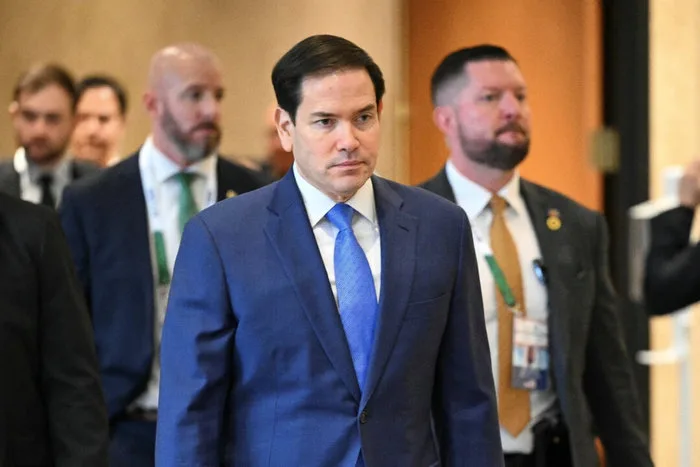By Ryan Morgan
Secretary of State Marco Rubio, on Nov. 22, disputed claims that President Donald Trump’s latest plan to end the fighting in Ukraine amounts to a wish list for Russia.
“The peace proposal was authored by the U.S.,” Rubio wrote in a post on X on Saturday evening.
Rubio added that the proposal incorporated input from both the Russian and Ukrainian sides in the conflict.
Earlier on Saturday, PBS NewsHour correspondent Nick Schifrin reported that Rubio had made indications to Sens. Mike Rounds (R-S.D.) and Angus King (I-Maine) that a leaked version of the 28-point proposal was not produced by the Trump administration.
“MORE from [King]: ‘The leaked 28-point plan, which, according to [Rubio], is not of the administration’s position–it is essentially the wish list of the Russians,” Schifrin wrote in a post on X on Saturday night.
Even before Rubio responded, State Department deputy spokesman Tommy Pigott said the allegations Schifrin was raising were “blatantly false.”
“As Secretary Rubio and the entire Administration has consistently maintained, this plan was authored by the United States, with input from both the Russians and Ukrainians,” Pigott wrote in an X post.
While the White House has yet to formally release the proposal, The Associated Press and other publications have published draft versions of the 28-point plan.
Among other items, the published draft points indicated the United States would recognize Crimea, Luhansk, and Donetsk as de facto territories of Russia, and freeze the conflict along the current battle lines in Kherson and Zaporizhzhia, effectively locking in Russian territorial gains throughout the course of the nearly four-year conflict. The plan also appears to rule out Ukrainian entry into the North Atlantic Treaty Organization (NATO), and NATO will agree not to expand any further, while Russia will agree not to invade any more countries.
Further, the plan states Ukraine will receive security guarantees, but will also have to cap the size of its military force.
Even before the allegations about the authorship of the 28-point peace plan, the Trump administration was facing apprehension about the proposal.
Throughout the conflict, Ukrainian President Volodymyr Zelenskyy has sought strong security commitments from Ukraine’s global supporters, including a path for Ukrainian entry into NATO. Likewise, Zelenskyy has repeatedly insisted he will not cede territory taken by Russia as a means of settling the conflict.
In an address on Nov. 21, Zelenskyy alluded to a series of dilemmas he now faces.
“Either the loss of our dignity or the risk of losing a key partner. Either the difficult 28 points, or an extremely hard winter—the hardest yet—and the dangers that follow. A life without freedom, without dignity, without justice. And that we trust someone who has already attacked us twice,” the Ukrainian president said.
Ukraine’s other international backers have also expressed a desire to revise the plan.
The European Union, France, Germany, Poland, the UK, and other nations that have affirmed support for Ukraine over the course of the conflict, released a joint statement on Saturday, in which they said the 28-point plan “is a basis which will require additional work.”
In his Saturday evening X post, Rubio said the current plan is a “strong framework for ongoing negotiations.”
While speaking with reporters earlier in the day, Trump said the current plan doesn’t represent his final offer.





